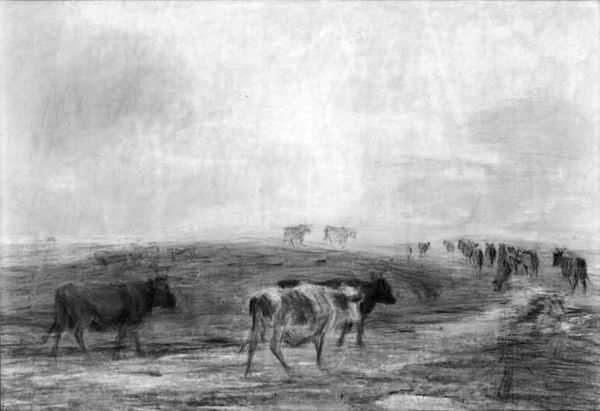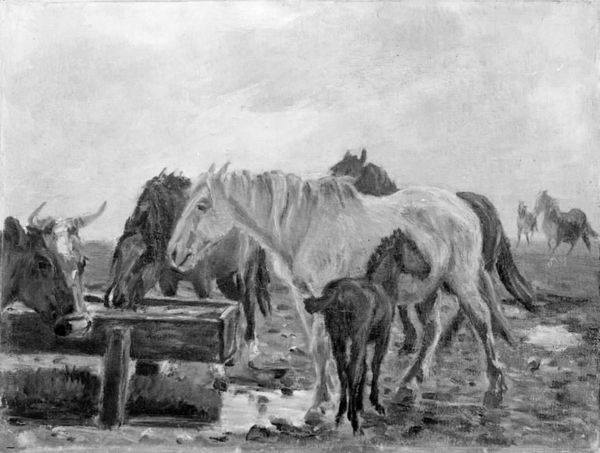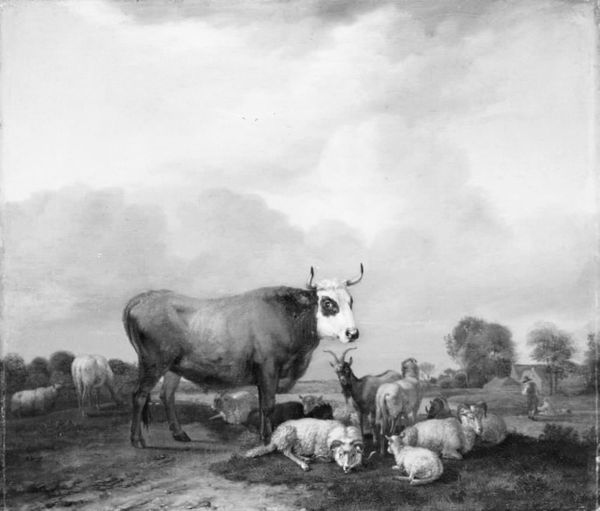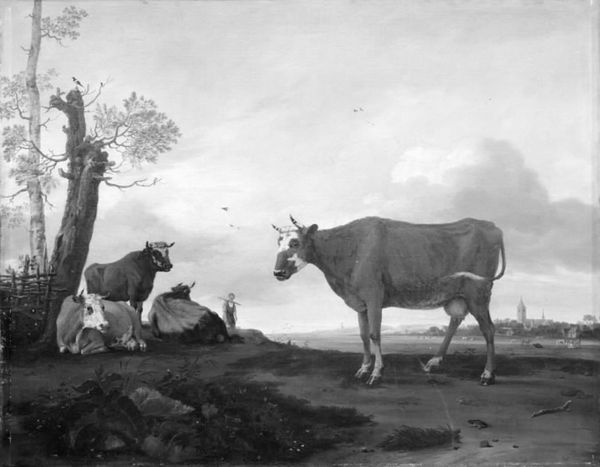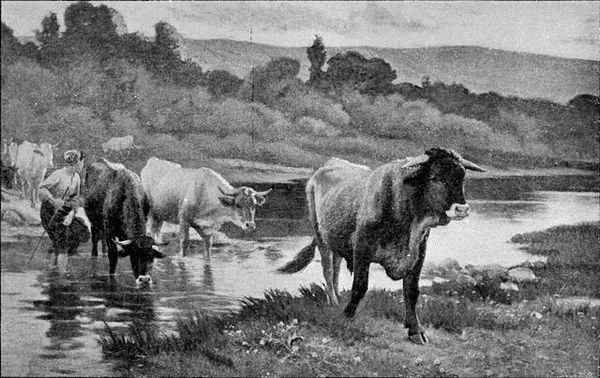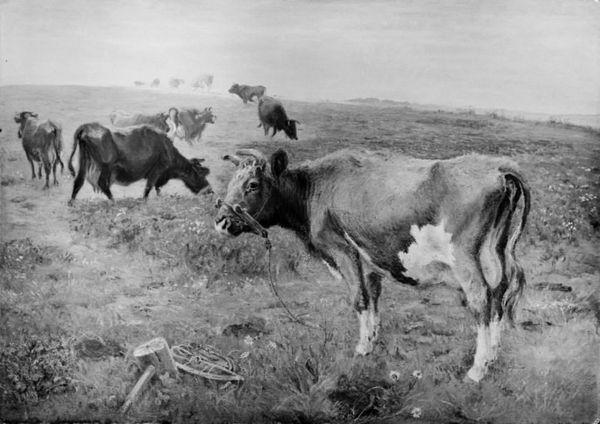
painting, plein-air, charcoal
#
painting
#
plein-air
#
landscape
#
charcoal drawing
#
monochrome colours
#
black and white
#
charcoal
#
monochrome
#
charcoal
#
monochrome
Dimensions: 44.5 cm (height) x 58.5 cm (width) (Netto)
Editor: So, this is "Jerseykøer" by Peter Hansen, from 1917. It's a painting done in charcoal. The scene of cows in a field, rendered in monochrome, evokes a feeling of serenity and pastoral life. It’s very dreamlike. What do you see in this piece? Curator: I see more than just cows; I see symbols of abundance, nature, and a connection to a simpler time. The monochromatic palette almost feels like a memory. Note how charcoal as a medium can speak to temporality. Consider what the artist’s choice of depicting Jersey cows, specifically, might signify to a Danish audience in 1917. What qualities might those animals have symbolized? Editor: That's an interesting question! I hadn't thought about the cows themselves carrying a specific meaning. Is it about the association with dairy production and rural prosperity? Curator: Precisely! The choice carries significant weight in understanding the artwork’s full meaning. These weren’t just any cows. And look at their positioning, relaxed. They appear contemplative almost. The pastoral setting provides a sense of timelessness, but within the historical context of World War I, doesn't the tranquility also speak volumes? Editor: Yes, it’s a very powerful contrast. The dark tones of the trees against the open field almost act as a warning or boundary. The artist makes us wonder what’s beyond the field. Curator: And this is why the artist's careful consideration of composition adds depth; beyond what’s plainly visible in the image. Editor: It’s fascinating how an ostensibly simple scene reveals so much complexity when you start to decode the imagery and its historical context. Curator: Indeed. It is the subtle symbols and imagery that weave cultural memory into visual form, sparking a deeper understanding.
Comments
No comments
Be the first to comment and join the conversation on the ultimate creative platform.
